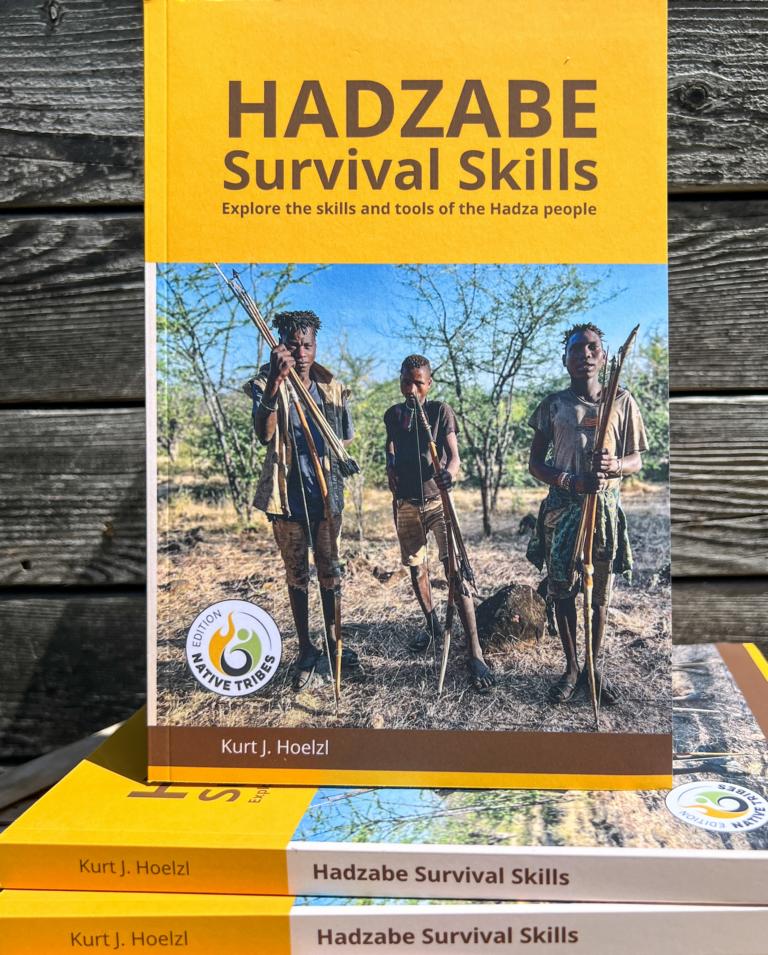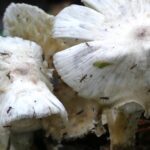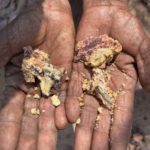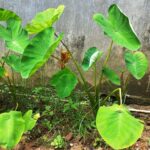The Buffalo thorn tree (Ziziphus mucronata) is called in Afrikaans “Blinkblaar-wag-‘n-bietjie” for its shiny leaves and two thorns, which hold people back when getting caught by them. The shrub or tree has got distinctive zigzag branchlets with pairs of two thorns: one hooked thorn pointing downwards and one straight thorn pointing upwards.
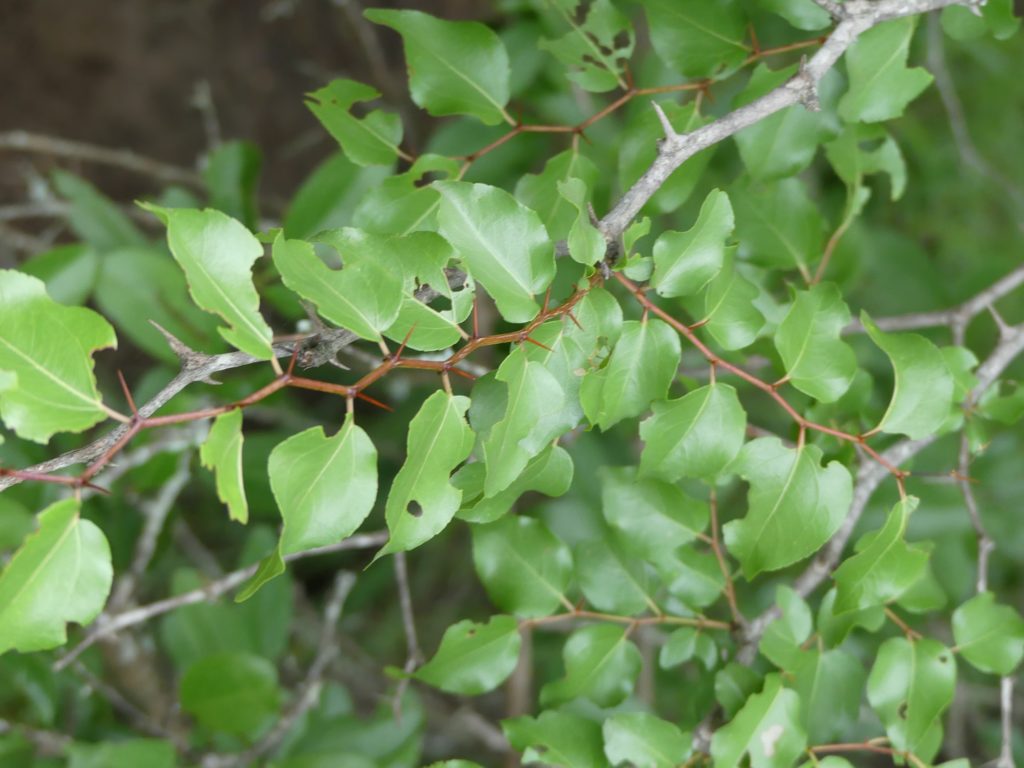
Mr. Mxolisi (‘Xia’) Mabilane, a VaTsonga from the Greater Letaba Local Municipality, commented on this tree as follows:
Uses of Buffalo thorn shrubs and trees
Food from Buffalo thorn trees

Young leaves are soft and have low tannin content. They can be eaten raw and taste well. If cooked, bush spinach can be used as a side dish for protein- or starch-based food. It is always a positive surprise; how such soft and well-tasting leaves can survive in such a harsh environment. But they don’t need chemicals for protection – they got their nasty thorns for defense.
Fruits are leathery-skinned with only a small layer of pulp, which is quite dry and tastes slightly sweetish. Ovambo people are drying the fruits and grinding off the dry pulp thereafter, using it as an addition to maize meal. The reddish skin and pulp are more of a teaser to attract animals to eat the fruit for the dispersal of the seeds because the plant puts its main energy into the kernels of these seeds. These energy-rich kernels are protected by a hard shell, which has to be cracked open to extract them.
According to the information provided here, the protein content is about 19%, carbohydrate content abt. 18% and the energy of the kernel within the seed is about. 2008 kcal/100 g of kernels. The caloric value of Z. mucronata seed was 2008.58 kcal. This value is high and as such could be recommended as a dietary supplement for people who require a lot of energy, for example, athletes.
Quote from Yerima, B. I. and Markus M.
During the Second Anglo-Boer War 1899-1902, these fruits and roots (besides other plant parts) were roasted and used as substitute coffee by the Boers.
Medical uses
Buffalo thorn roots will be cut into pieces, pounded, and put in a bit of water to wash out the compounds. Drinking this water will act as a pain killer. There is a variety of other medical applications, which are based on the alkaloids and antifungal properties in roots and older leaves.
Cultural uses and believes
Buffalo thorn trees play an important part in the cultural beliefs of the isiZulu and VaTsonga cultures. If a Zulu chief dies, a Buffalo thorn tree will be planted on the grave, to mark it ‘forever’.
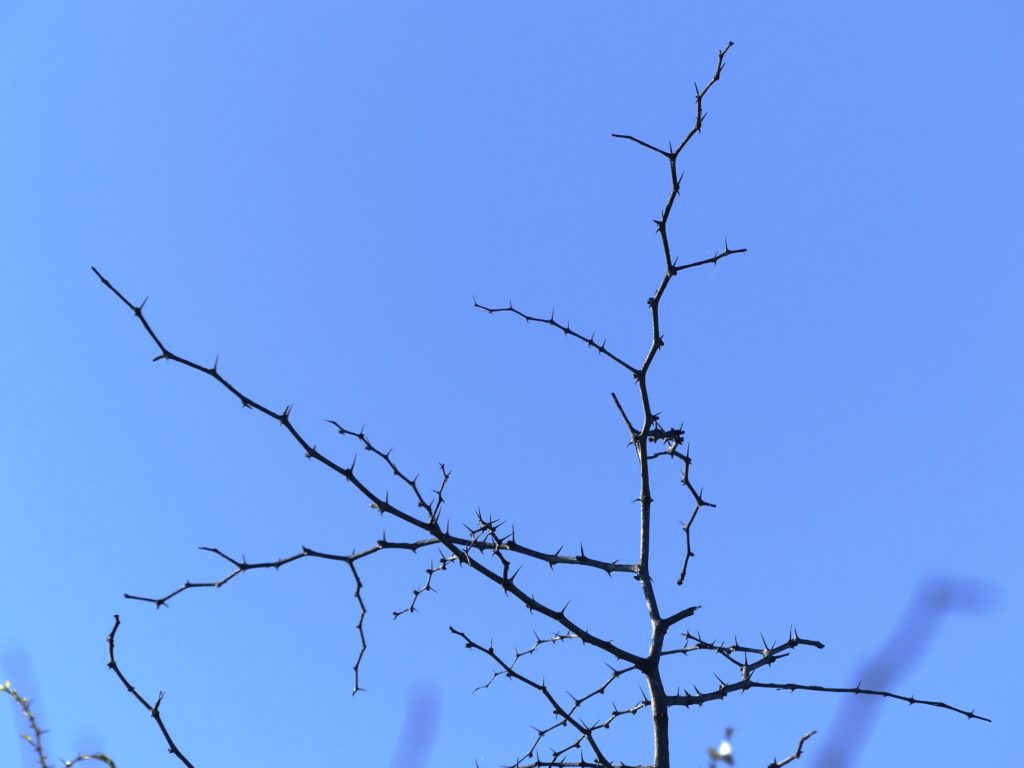
As Mxolisi Mabilane explains in the podcast above, in his Tsonga (but also Zulu-) culture, the place where a person died will be brushed with a Buffalo thorn branch. With this branch, the soul of the departed will be caught and brought back. Either to his grave, hut, or another place where the spirit can rest in peace. When carrying the branch, the person is not allowed to look back. Therefore he has to reserve two seats on a bus (one for him and one for the spirit). And he has to explain to the Buffalo thorn branch with the spirit in it, what will be done next. This is a tradition which is observed even today (2022).
Zulu people also firmly believe, that during thunderstorms, protection should be sought under a buffalo thorn tree. It is believed, that they are immune to lightning strikes. There may be an explanation for this belief, as Buffalo thorn trees nearly always grow smaller than surrounding trees. Therefore, lightning will strike the higher ones. And it is also said, that cutting down a Buffalo thorn tree will bring bad luck to that person.
Uses of Buffalo thorn trees for protection
Buffalo thorn branches are well suited for the protection of kraals (places at which cattle, sheep, or goats are kept during nighttime). If travelers are sleeping out in the bush, a surrounding circle of Buffalo thorn branches will keep out any undesirable predators. The height of such a kraal should be about 1,5 meters high and it should be structurally strong. This means branches must be interwoven and the whole thorn branch circle be wide enough.
Certain TV series (like ‘Naked Survival’) call such protective thorn rings ‘Bomas’. This expression may be correct in other parts of Africa, but not in Southern Africa. A Boma is a meeting place with a stockade around, and a Kraal is a protected place – which is what is required for the ‘Naked Survivors’.
Lessons learned from Buffalo thorn uses:
- Its leaves are very pleasant to eat, either raw or cooked as a kind of spinach
- Seed kernels are very high in calorific value
- Buffalo thorn branches are important in Zulu and Tsonga traditions for sweeping up and transporting the souls of diseased persons
- Branches are used for building kraals for protection during nighttime
.

